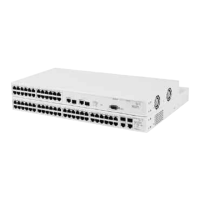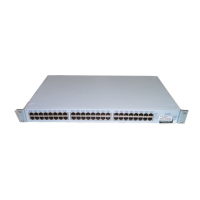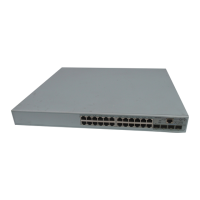52 CHAPTER 6: USING TRAFFIC MANAGEMENT
802.1D packets are categorized into the eight traffic classes defined by
IEEE 802.1D; the higher the class the higher the priority given to the
packet on transmission. See Figure 11
.
DSCP packets are categorized into the six service levels as shown in
Figure 12
and mapped to the appropriate queue.
The priority defined in the service level directs the packet to the
appropriate egress queue. When a packet comes in with more than one
marking the markings are ranked as follows:
1 IP Port — if the destination IP port of the packet has been allocated a CoS
value then the packet is prioritized by that value.
2 DSCP — if the packet is marked with a DSCP value and if that value is
enabled then the packet is prioritized with the corresponding priority.
3 IEEE 802.1D — If the packet is marked with an IEEE 802.1D traffic type
then this will be used to prioritize the packet.
Configuring traffic prioritization
CoS can be configured on your Switch using the Web interface or via the
Command Line Interface (CLI).
For a detailed description of the commands that you require to configure
CoS refer to the Management Interface Reference Guide supplied in
HTML format on the CD-ROM that accompanies your Switch.
Limiting the Rate of
a Port
Limiting the rate at which a port can receive or send traffic can be used to
ease congestion on bottlenecks in your network and provide simple
prioritization when the network is busy.
Rate limiting is commonly used in the following situations:
■ To prevent a high bandwidth client or group of clients from
dominating the traffic on your network.
■ To balance the traffic at a bottleneck, such as an external-facing
router, so that different departments or parts of your network get
similar access across the bottleneck.
The advantage of rate limiting is that it is a simple solution: it is easy to
set up and maintain. It can be used to effectively keep the traffic on your
network to a manageable level.
